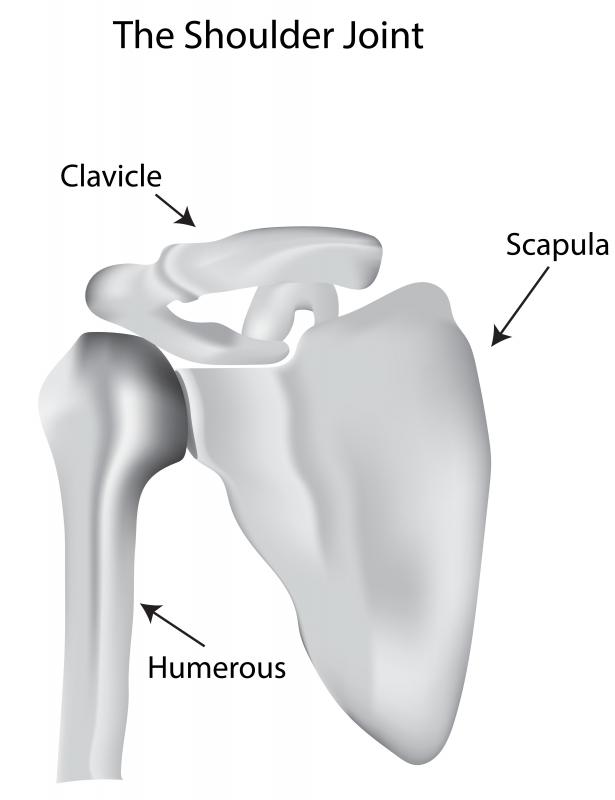At WiseGEEK, we're committed to delivering accurate, trustworthy information. Our expert-authored content is rigorously fact-checked and sourced from credible authorities. Discover how we uphold the highest standards in providing you with reliable knowledge.
What is the Acromioclavicular Joint?
The acromioclavicular joint is the joint where the top of the scapula, or shoulder blade bone, connects to the collarbone. This joint provides the ability to rotate the arms at the shoulder and raise the arms above the head. Most people have a small bump where the acromioclavicular joint connects the shoulder blade and collarbone, but some people have a more pronounced nodule.
A cartilage disk protects this joint. The ends of the scapula and collarbone are protected by cartilage to help maintain range of motion. The acromioclavicular, coracoacromial, and coracoclavicular ligaments hold the joint in place and help stabilize it.

Common injuries of the acromioclavicular joint include separation, dislocation, and sprains. Injuries to the joint are common in athletes who play contact sports, such as football, rugby, and hockey. People who participate in activities where they may fall from a height, such as horseback riders and bikers, are also at risk for injury. Injury is usually caused by landing on the rounded side of the shoulder after a fall, or by falling onto an outstretched hand.

Most injuries cause pain, bruising, and tenderness of the collarbone and shoulder area. X-rays to compare the injured shoulder with the uninjured side can diagnose an acromioclavicular joint injury. There are three grades of injury: Grade I injuries involve overly stretched ligaments, Grade II injuries mean the ligaments are partially torn, and Grade III means the ligaments are completely torn.

Sprains and acromioclavicular separations are treated with ice to relieve swelling and pain. The shoulder can be stabilized with a supportive sling for several days to several weeks while the injury heals. Physical therapy and home exercises to improve range of motion can help restore joint function after an injury. Most separations take two to three weeks to heal completely.

Some joint injuries do not heal without surgical intervention. If the acromioclavicular joint fails to heal with conservative treatment methods or if it causes a deformity, it can usually be repaired with a Mumford procedure. During the Mumford procedure, a surgeon removes or reshapes the end of the collarbone to allow the joint to heal properly. A Weaver-Dunn procedure may be done to repair or replace the ligaments. A Weaver-Dunn procedure requires a larger incision, so it is usually reserved for the most serious injuries.

Recovery from surgery to repair the acromioclavicular joint requires immobilization with a sling for one to four weeks, depending on what type of procedure is performed. Lifting heavy objects is not allowed for at least three weeks. Physical therapy and motion exercises help re-strengthen the joint and ligaments after the joint and surgical incision have healed.
AS FEATURED ON:
AS FEATURED ON:















Discuss this Article
Post your comments